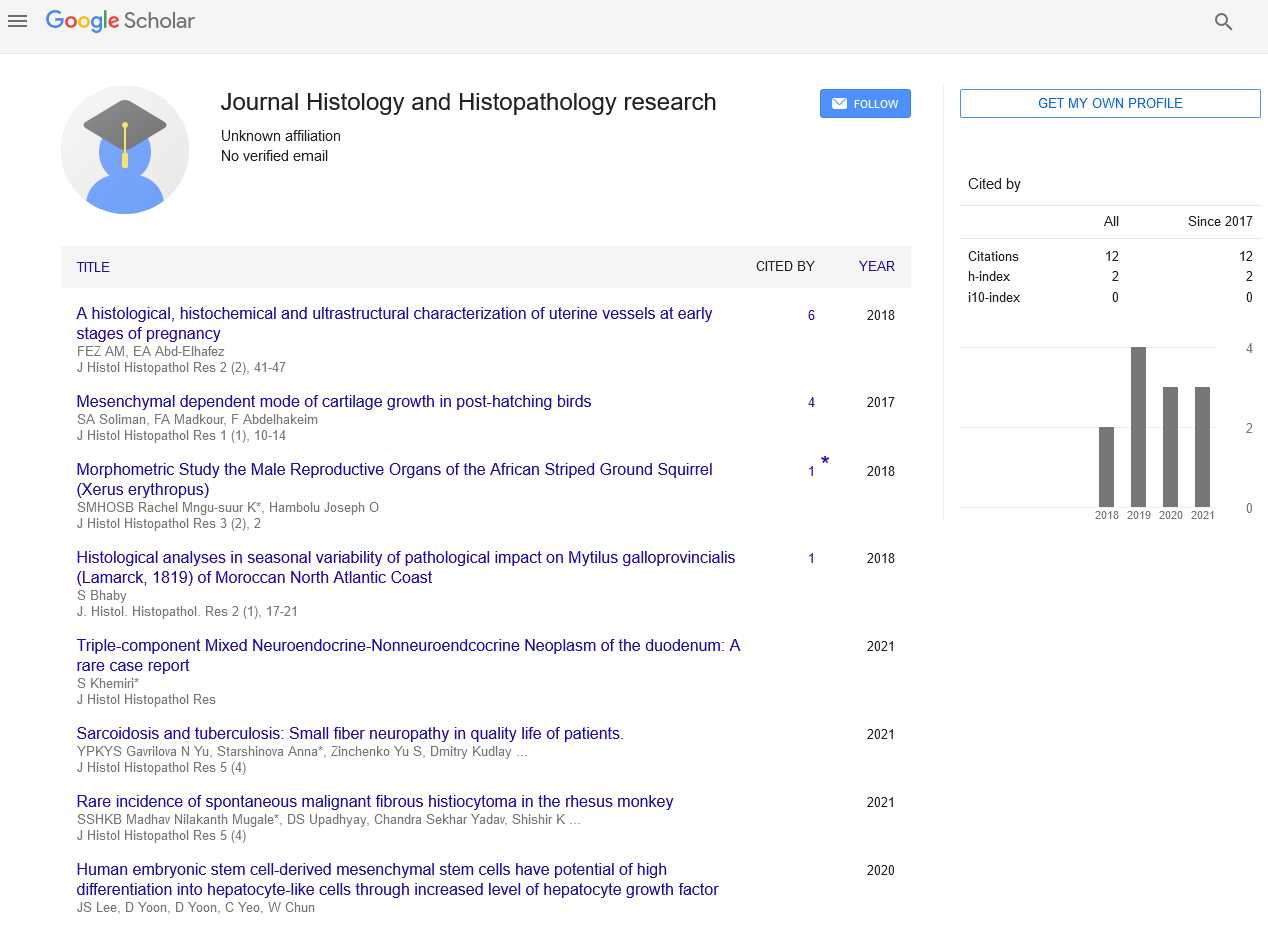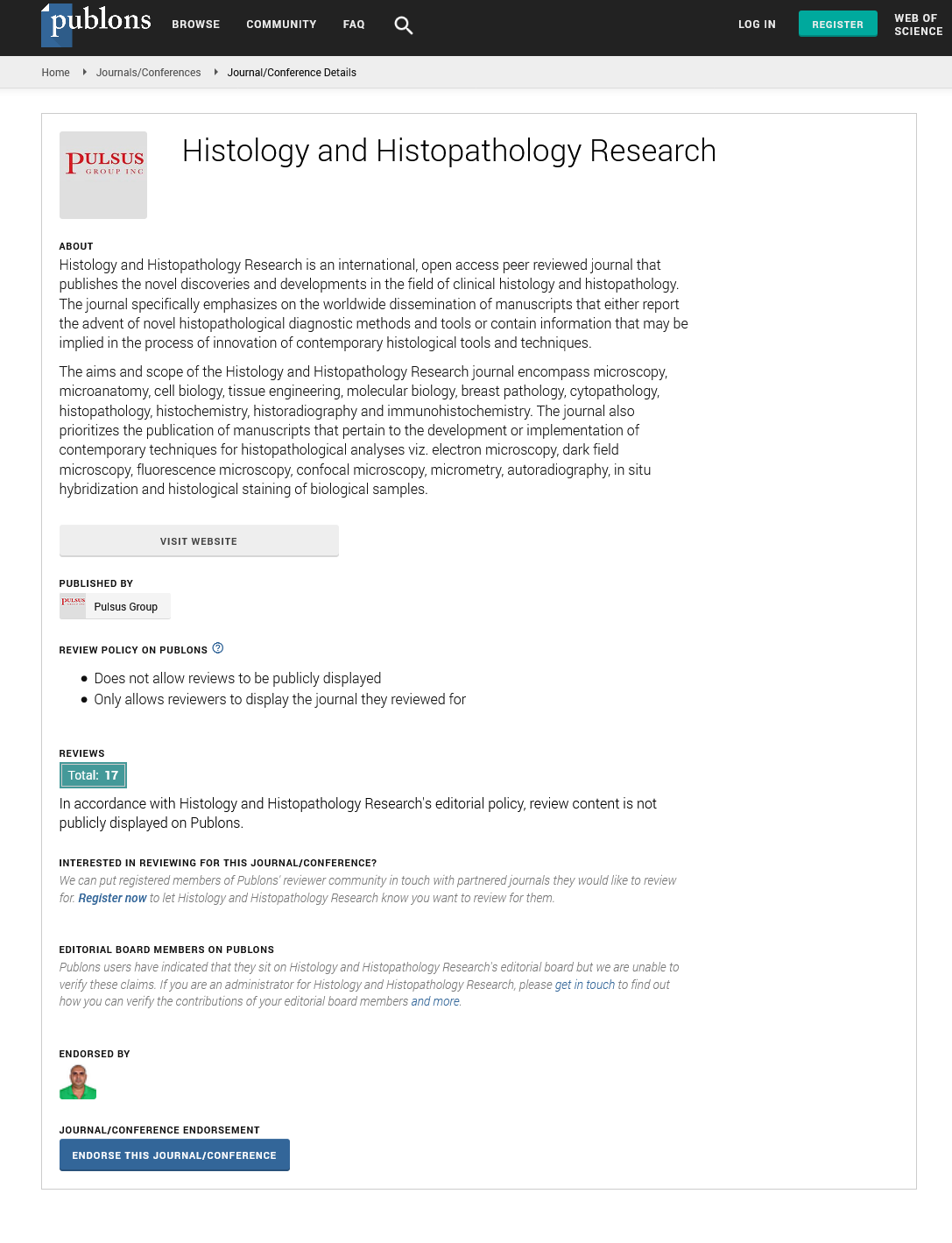Practice of cytopathology in the COVID-19 pandemic
Received: 01-Mar-2022, Manuscript No. PULHHR-22- 4705; Editor assigned: 03-Mar-2022, Pre QC No. PULHHR-22- 4705; Accepted Date: Mar 19, 2022; Reviewed: 15-Mar-2022 QC No. PULHHR-22- 4705; Revised: 17-Mar-2022, Manuscript No. PULHHR-22- 4705; Published: 24-Mar-2022, DOI: 10.37532/pulhhr.22.6(2).64-65
This open-access article is distributed under the terms of the Creative Commons Attribution Non-Commercial License (CC BY-NC) (http://creativecommons.org/licenses/by-nc/4.0/), which permits reuse, distribution and reproduction of the article, provided that the original work is properly cited and the reuse is restricted to noncommercial purposes. For commercial reuse, contact reprints@pulsus.com
Abstract
Since the extreme intense respiratory condition Covid 2 (SARS-CoV-2) flare-up was proclaimed a pandemic, the Spreadness of Coronavius 2019 (COVID-19) has kept on Increasing, putting an extraordinary strain on every clinical field. Its impacts on cytopathology jobs have been sensational. Without a doubt, notwithstanding the execution of a few lab biosafety suggestions, cytological screening exercises and cytological testing of patients at generally safe of harm have been delayed to restrict the gamble of virus and to decrease the strain on overpowered emergency clinic offices. In this situation, a radical decrease in the all-out number of cytological examples has been noticed around the world. This audit sums up the present proof of the effect of the COVID-19 pandemic on cytopathology practice by zeroing in on its effect on cytological example responsibility.
Keywords
COVID-19; Cytopathology; FNA; Cancer; Coronavirus; Pandemic
Perspective
COVID-19, brought about by Severe Acute Respiratory Syndrome Coronavirus 2 (SARS-CoV-2), was pronounced a pandemic on 11 March 2020. From that point forward, the extent of the pandemic has kept on developing dramatically, making a remarkable strain on wellbeing frameworks around the world. To be sure, the need to increment medical clinic ability to meet the flood in COVID-19 patients and the utilization of severe wellbeing techniques, such as, social separating, have significantly had an impact on how medical services is conveyed. In this situation, the area of cytopathology has needed to confront a few specialized and demonstrative difficulties to adapt to the dangers of infection while proceeding to convey productive cytopathology administrations. To beat a portion of the specialized difficulties, a few wellbeing rules have been set up to shield research facility clinicians from the possible presence of the infection in cytological examples. A portion of these rules incorporate the utilization of Personal Protective Equipment (PPE) during example assortment, dealing with, and handling and the utilization of a confirmed Class II Biosafety Cabinet (BSC) during spray creating systems, remembering Rapid On-Site Evaluation (ROSE). Also, the rules suggest the utilization of fixative arrangements containing >70% liquor as opposed to air-dried spreads for their capacity to inactivate SARS-CoV-2.
Likewise, the pandemic has additionally impacted cytopathology analytic action. Without a doubt, since clinics have been encouraged to survey all planned elective strategies to limit or delay non-pressing systems, cytological screening exercises and cytological examining of patients at generally safe of harm have all been deferred.
Since the start of the pandemic, a developing group of writing has explored the size and the impacts of deferred malignant growth screening and analysis. In this survey, we will momentarily sum up this proof of the effect of the COVID-19 pandemic on cytopathology practice, especially by zeroing in on the progressions in cytology responsibility.
The primary review exploring the impacts of the COVID-19 pandemic on cytopathology practice was accounted for by the cytopathology lab of the University of Naples "Federico II", Italy, in April 2020. At that point, Italy was the most awful hit country after China to confront the COVID-19 pestilence, before long turning into the country with the biggest number of diseases and COVID-19-related passings. A public lockdown was forced on 9 March 2020; after two days, the WHO announced COVID-19 a pandemic. During the initial three weeks of the public lockdown, the Italian review detailed an extreme generally decrease (−84.7%) in the complete number of cytological examples contrasted and 2019. The most impacted examples were Pap smears and thyroid Fine Needle Aspiration (FNA) tests, though the most un-impacted were tests at higher gamble of danger, like bosom and lymph hub FNAs. These information show that the execution of a prioritization strategy during a wellbeing emergency brings about a fundamentally higher pace of handled harmful examples.
Deprioritization of all elective operations has been an unavoidable impact of the COVID-19 pandemic "crisis stage" to keep up with the limit of medical care offices and to lessen the gamble of contamination among patients and clinical staff. Nonetheless, opportune analysis, therapy, and ordinary subsequent meet-ups for specific malignancies are urgent to dragging out the general endurance of cutting edge disease patients. After the principal wave of COVID-19, single foundations encountered a continuous expansion in cytological example volume because of the gradual releasing of prohibitive measures.
Notwithstanding the prescient purposes, sub-atomic profiling of cytological examples is additionally as of now used to additionally define abnormal and dubious cytology classes into low and high harm risk classifications, for example, in the administration of questionable thyroid knob FNAs. In spite of the fact that, supposedly, no investigations have zeroed in on the impact of the COVID-19 pandemic on the atomic profiling of thyroid examples, it is sensible to accept that a decrease in the sub-atomic testing of vague thyroid knobs was because of the abatement in thyroid FNAs seen during the lockdown. Rather than prescient atomic testing in cutting edge stage NSCLC disease patients, this peculiarity is steady with the proof that most separated thyroid malignant growths are not thought of as therapeutically critical and can accordingly be delayed due to their sluggish clinical course.
Now that the world is as yet in the center of the pandemic, cytology practice is as yet battling to get back to the pre-pandemic levels, as the feeling of dread toward virus actually pervades individuals' lives. In this situation, mass inoculation could without a doubt be a distinct advantage that could assist with renewing essential medical care administrations, including preventive and indicative consideration administrations. Meanwhile, ceaseless observing of cytopathology practice is central to ensure that in some measure high-risk oncological patients are appropriately made due. At last, considering the huge accumulation of patients anticipating cytological testing, we expect a bounce back expansion in screening and analytic systems sooner rather than later.
All in all, since the start of the pandemic, a developing assemblage of writing has explored the greatness of deferred disease screening and conclusion. As cytopathology is regularly a first-line strategy in the neoplastic setting, cytopathology research centers address a special vantage point from which to assess the effect of the COVID-19 pandemic on the administration of oncological patients. Without a doubt, in spite of the execution of prioritization strategies, cytology jobs have been definitely decreased worldwide to limit the spread of disease and to increment medical clinic limit with regards to COVID-19 patients. Along these lines, consistent checking of cytopathology practice is justified to assess the re-visitation of pre-COVID-19 levels.






